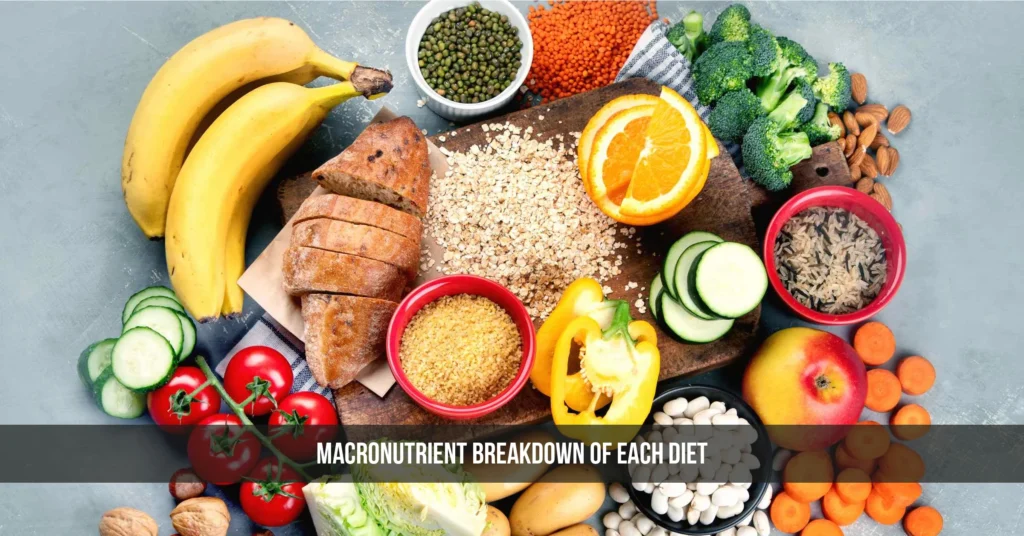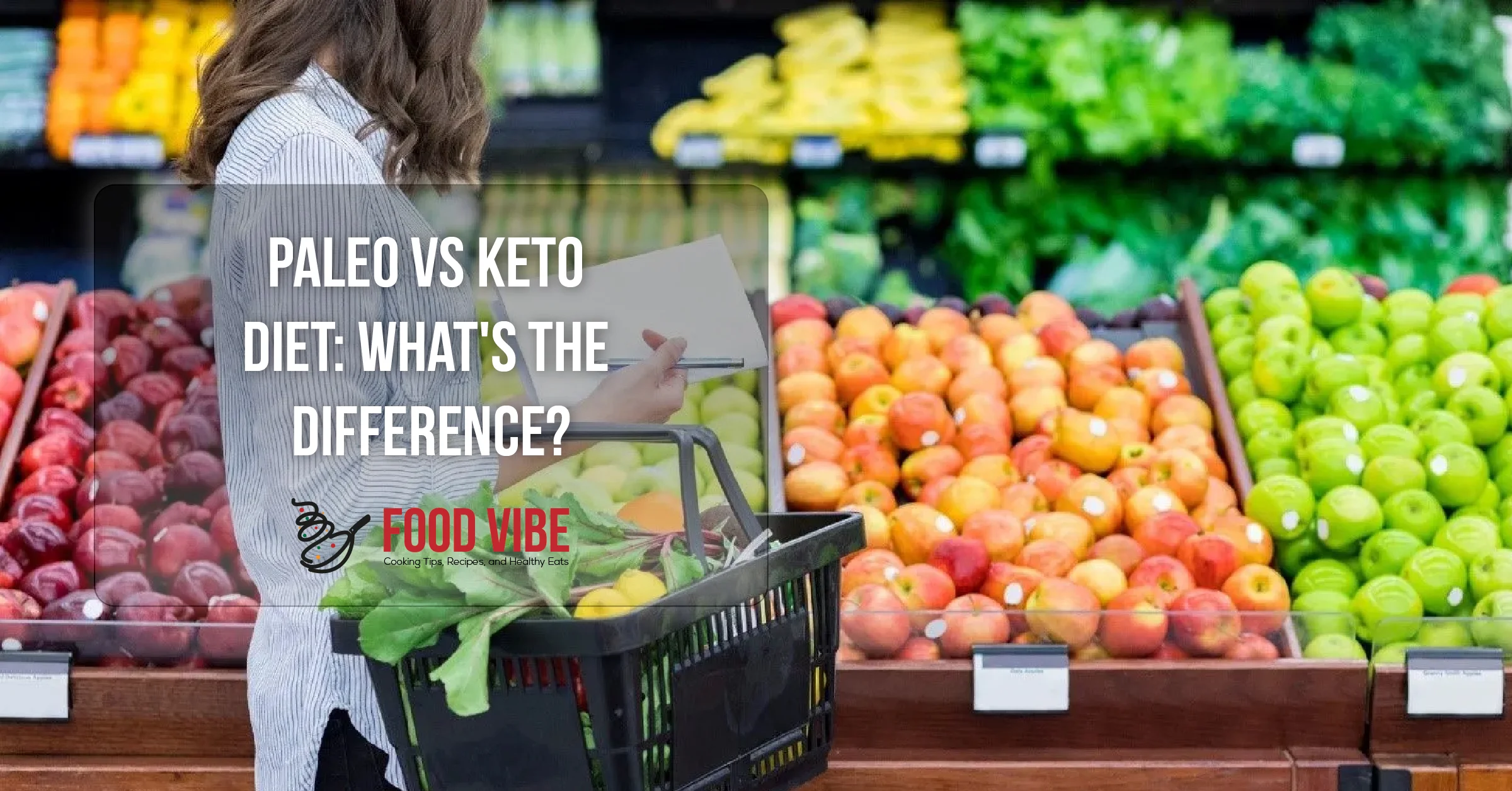Paleo vs Keto Diet: What’s the Difference?
When thinking about starting a new diet, you might wonder about the paleo and keto diets. Both have their good points and downsides. It’s key to know what each diet is about to choose the best one for you.
Knowing the difference between these diets helps you pick the right one for your health and lifestyle. The debate between paleo and keto isn’t just about food. It’s about how you view nutrition and wellness. This article will show you the main differences between the paleo and keto diets. It will help you decide which one fits your needs.
Table of Contents
Understanding the Basics of Both Diets
Exploring diets means knowing their main ideas. The paleo diet is about eating like our ancestors did, avoiding modern additives. The keto diet, on the other hand, is a low-carb, high-fat diet. It helps your body burn fat for energy.
It’s important to know where these diets come from. The paleo diet is based on eating foods our ancestors had. The keto diet started in the early 1900s to help with epilepsy.
Key Principles of the Diets
- The paleo diet focuses on whole foods like meats, fruits, and veggies.
- The keto diet is all about high-fat, low-carb foods.
- Both diets might offer health benefits, but knowing their differences is key.
Understanding both diets helps you choose the right one for you. Whether you prefer whole foods or a keto lifestyle, knowing the basics is crucial. It affects your health and wellbeing.
What’s the Difference Between Paleo and Keto Diets?
When looking at diets, you might wonder about the paleo vs keto comparison. Both diets are popular, but they differ in their nutrition approaches. The paleo diet focuses on whole, unprocessed foods our ancestors ate. The keto diet, on the other hand, is low in carbs and high in fat to enter a metabolic state called ketosis.
Both diets cut out certain foods. The paleo diet doesn’t include grains, dairy, or legumes. The keto diet limits carbs. But, the paleo diet lets you eat fruits and veggies, while the keto diet doesn’t.
Some main differences are:
- Carbohydrate intake: The keto diet limits carbs to 20-50 grams daily. The paleo diet is more flexible.
- Protein intake: The paleo diet has more protein. The keto diet focuses on fat for energy.
- Food choices: The paleo diet prefers whole foods. The keto diet allows processed foods if they’re low in carbs.
Understanding the paleo vs keto comparison and their similarities can guide you. By looking at their differences and similarities, you can pick the diet that fits your lifestyle and health goals.

Comparing Allowed and Restricted Foods
Looking at the paleo diet versus the keto diet, it’s key to see what foods are allowed and restricted. Both diets have different food choices, which can affect your choice. They both focus on nutrition but in different ways, with some foods in common.
The paleo diet focuses on whole, unprocessed foods. The keto diet, on the other hand, is all about high-fat, low-carb foods. Knowing these basics helps you understand the food lists of each diet.
Paleo Diet Food List
- Lean meats (grass-fed beef, wild game)
- Fish and seafood (salmon, shrimp)
- Fruits (apples, berries)
- Vegetables (leafy greens, broccoli)
- Nuts and seeds (almonds, chia seeds)
Keto Diet Food List
- Fatty meats (beef, pork)
- Fatty fish (salmon, tuna)
- Eggs
- Full-fat dairy (cheese, butter)
- Oils (olive, coconut)
Common Foods in Both Diets
Even though the paleo and keto diets differ, they share some foods. These include:
- Leafy greens (spinach, kale)
- Avocados
- Nuts and seeds (almonds, chia seeds)
By knowing the foods each diet allows and restricts, you can choose the best one for you. This includes comparing the paleo diet versus keto diet and their food lists.
Macronutrient Breakdown of Each Diet
Exploring the difference between paleo and keto diets means looking at their macronutrient breakdown. Each diet has its own way of handling carbs, protein, and fat. Knowing these differences helps you choose the right diet for you.
The paleo diet focuses on whole foods, with lots of protein from animals, fat from nuts and seeds, and carbohydrates from fruits and veggies. On the other hand, the keto diet is all about eating a lot of fat, very few carbs, and some protein. This big difference is a key part of the debate between paleo and keto.
Here’s a look at what each diet offers in terms of macronutrients:
- Paleo diet: 30-40% protein, 30-40% fat, 30-40% carbohydrates
- Keto diet: 15-20% protein, 70-80% fat, 5-10% carbohydrates
Looking at the paleo and keto diets, it’s clear keto limits carbs more. Paleo, however, emphasizes eating whole, unprocessed foods. By understanding these differences, you can pick the diet that fits your health and wellness goals.
| Diet | Protein | Fat | Carbohydrates |
|---|---|---|---|
| Paleo | 30-40% | 30-40% | 30-40% |
| Keto | 15-20% | 70-80% | 5-10% |

Health Benefits and Potential Risks
When looking at the paleo and keto diets, it’s key to consider their health benefits and risks. Both diets are popular for improving health and well-being. They focus on whole, nutrient-rich foods, which can help with weight management and reduce inflammation.
It’s important to compare the scientific research on these diets. The paleo diet may lower the risk of heart disease and type 2 diabetes. Meanwhile, the keto diet can help with seizures and blood sugar control. But, both diets might have risks like nutrient deficiencies and negative effects on health markers.
Benefits and Risks of Each Diet
- The paleo diet may improve digestion and reduce IBS symptoms
- The keto diet may enhance mental clarity and reduce depression symptoms
- Both diets may have risks, like negative gut health effects and increased kidney stone risk
Before starting either diet, it’s crucial to talk to a healthcare professional, especially if you have health conditions. Understanding both diets and their similarities can help you choose the best one for you.
Weight Loss Effectiveness
Both the paleo and keto diets have their own benefits for weight loss. The paleo diet focuses on whole foods and can lead to quick weight loss. The keto diet, on the other hand, helps the body burn fat for energy, leading to long-term weight loss.
Looking at macronutrients is important in this comparison. The paleo diet is rich in protein and fiber, making you feel full. The keto diet, with its high fat and low carbs, helps you enter ketosis and lose weight. It’s crucial to choose a diet that fits your needs and preferences.
Here are some key points to consider for weight loss:
- Caloric intake: Both diets can help with weight loss if you control your calories.
- Macronutrient balance: The paleo diet has more protein and fiber, while the keto diet is high in fat and low in carbs.
- Food quality: Both diets focus on whole, unprocessed foods, which are good for weight loss and health.
The best diet for weight loss is one that suits your needs and preferences. By comparing the paleo and keto diets, you can choose the right one for you.
Impact on Exercise and Athletic Performance
Understanding the paleo and keto diets is key for athletes and fitness fans. Both diets can affect how well you train and recover. The paleo diet, with its focus on whole foods, gives athletes the energy they need. The keto diet, rich in fat and low in carbs, is good for long, steady workouts.
The paleo diet is better for quick, intense workouts because it gives energy fast. The keto diet is great for long, slow activities because it keeps energy flowing. Choosing the right diet is crucial to avoid setbacks in training and recovery.
Training on the Paleo Diet
- High-intensity, short-duration activities, such as sprinting or weightlifting, may be more suitable for the paleo diet
- The paleo diet provides a quick source of energy, which can be beneficial for high-intensity activities
- Athletes may need to adjust their macronutrient intake to ensure they are getting enough energy for their specific sport or activity
Training on the Keto Diet
- Low-intensity, long-duration activities, such as distance running or cycling, may be more suitable for the keto diet
- The keto diet provides a sustained source of energy, which can be beneficial for low-intensity activities
- Athletes may need to adjust their electrolyte intake to ensure they are staying hydrated and performing at their best
The choice between paleo and keto diets depends on personal needs and goals. Knowing the differences helps athletes make better diet choices. This leads to better training and recovery. The debate between paleo and keto diets is ongoing, but both can significantly impact athletic performance.
Meal Planning and Preparation
Meal planning and preparation are key for success on the paleo and keto diets. Knowing the similarities between them helps create a balanced diet. Start with whole, unprocessed foods like veggies, fruits, and lean proteins.
Creating a meal plan routine is important. Plan your meals for the week and make a grocery list. For paleo, eat foods like lean meats, fish, and fruits. For keto, choose high-fat foods like nuts, seeds, and avocados.
Here are some tips for meal planning and preparation:
- Plan your meals around your lifestyle and schedule
- Shop for whole, unprocessed foods
- Prepare meals in advance to save time
- Consider meal prepping on the weekends or one day a week
By following these tips, you can create a meal plan that suits you. Focus on whole foods and plan meals that fit your life. With practice and patience, you’ll master meal planning for both diets. Enjoy the benefits of these diets.
Cost Comparison and Accessibility
When looking at a paleo vs keto comparison, cost and accessibility are key. The paleo diet versus keto diet debate often focuses on food prices and availability. The paleo diet is usually pricier because it emphasizes organic, grass-fed, and wild-caught foods.
The cost of meat, poultry, and seafood is a big part of the paleo vs keto comparison. The keto diet allows for more protein sources, like processed meats. But the paleo diet limits these, making it more expensive. For one person, the paleo diet can cost $100 to $150 a week. The keto diet, however, can cost between $80 to $120 a week.
Accessibility is another important factor in the paleo diet versus keto diet debate. The keto diet is easier to follow because keto-friendly foods like cheese, eggs, and bacon are common. But the paleo diet requires more effort to find organic, grass-fed, and wild-caught products. Yet, with online grocery shopping and meal delivery services, the paleo diet is getting easier to access.
In the end, the choice between paleo vs keto depends on what you prefer and your lifestyle. The paleo diet might be more expensive but focuses on whole, unprocessed foods. The keto diet is more flexible and accessible for weight loss and health improvement. By thinking about the cost and how easy it is to follow each diet, you can decide what’s best for you.
Which Diet Should You Choose?
Choosing a diet depends on your lifestyle, health goals, and what you like. Knowing the difference between paleo and keto diets helps you decide. Many people are unsure which diet fits their needs better.
Your lifestyle affects your diet’s success. If you’re always busy, look for a diet that’s easy to follow. If you’re aiming for weight loss or better blood sugar, pick a diet that helps with those goals.
Lifestyle Considerations
- Assess your daily routine and schedule
- Evaluate your budget and food preferences
- Consider your social life and how it may impact your diet
By thinking about your lifestyle, health goals, and preferences, you can choose wisely. Whether it’s paleo or keto, knowing the basics of each diet is key. This ensures it meets your individual needs.

Conclusion
The Paleo and Keto diets have some similarities. They both focus on whole, unprocessed foods and limit refined carbs. But, they differ in their macronutrient ratios.
Paleo aims for a balanced mix of protein, carbs, and healthy fats. Keto, on the other hand, seeks a high-fat, low-carb diet to induce ketosis. Both diets can lead to weight loss and better health, but the outcome depends on your needs and preferences.
When deciding between Paleo and Keto, think about your lifestyle and health goals. Consider which diet fits your dietary needs, fitness routine, and long-term goals. The best diet is one you can stick to over time.
Try out both diets and talk to a healthcare professional. They can help you choose the best diet for your specific situation.
Also Read: Delicious & Low-Calorie Recipes for Your Diet
FAQs
What is the main difference between the Paleo and Keto diets?
The Paleo diet focuses on whole, unprocessed foods like our ancestors ate, while the Keto diet emphasizes high-fat, low-carb intake to achieve ketosis for energy.
Which diet is better for weight loss: Paleo or Keto?
Both diets can support weight loss, but Keto may offer faster results due to fat-burning ketosis, while Paleo promotes sustainable weight loss through balanced, whole-food nutrition.
Can I eat fruits on the Keto diet?
Fruits are limited on the Keto diet due to their carb content, but low-carb options like berries can be eaten in moderation. Paleo, however, allows most fruits.
Is the Paleo diet more expensive than the Keto?
Yes, Paleo can be pricier due to its emphasis on organic, grass-fed, and wild-caught foods, whereas Keto allows for more affordable options like processed meats and dairy.
Which diet is better for athletes: Paleo or Keto?
Paleo is better for high-intensity, short-duration activities, while Keto suits endurance athletes due to its sustained energy from fat. Choose based on your fitness goals.














Post Comment